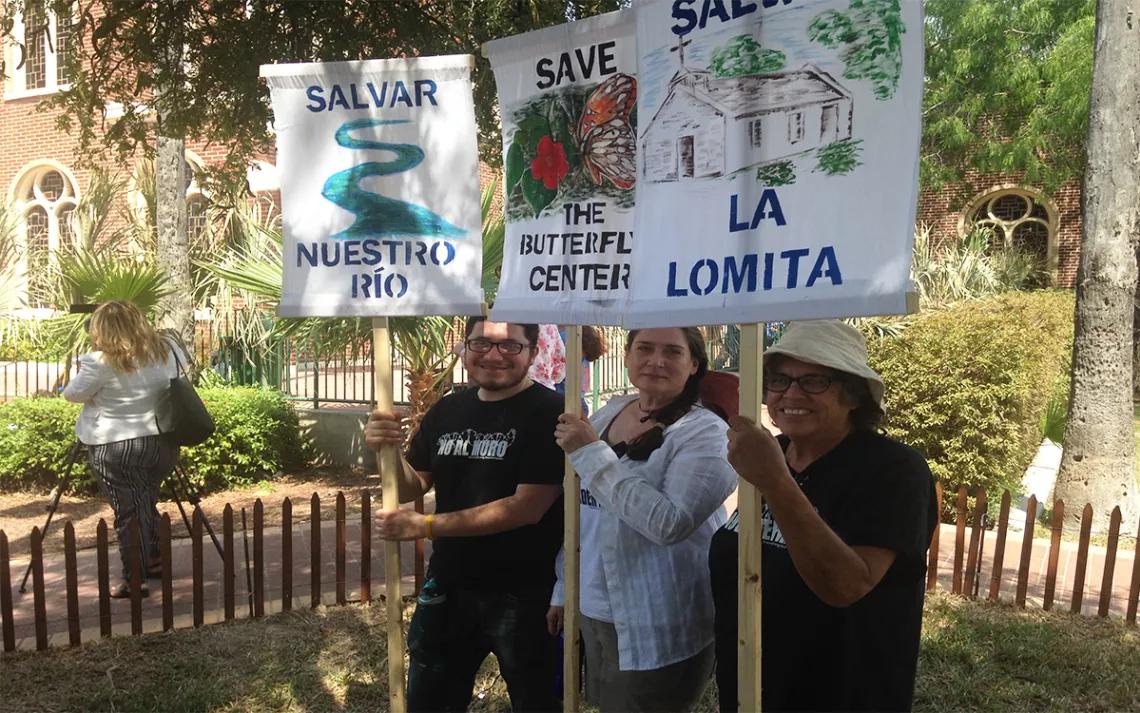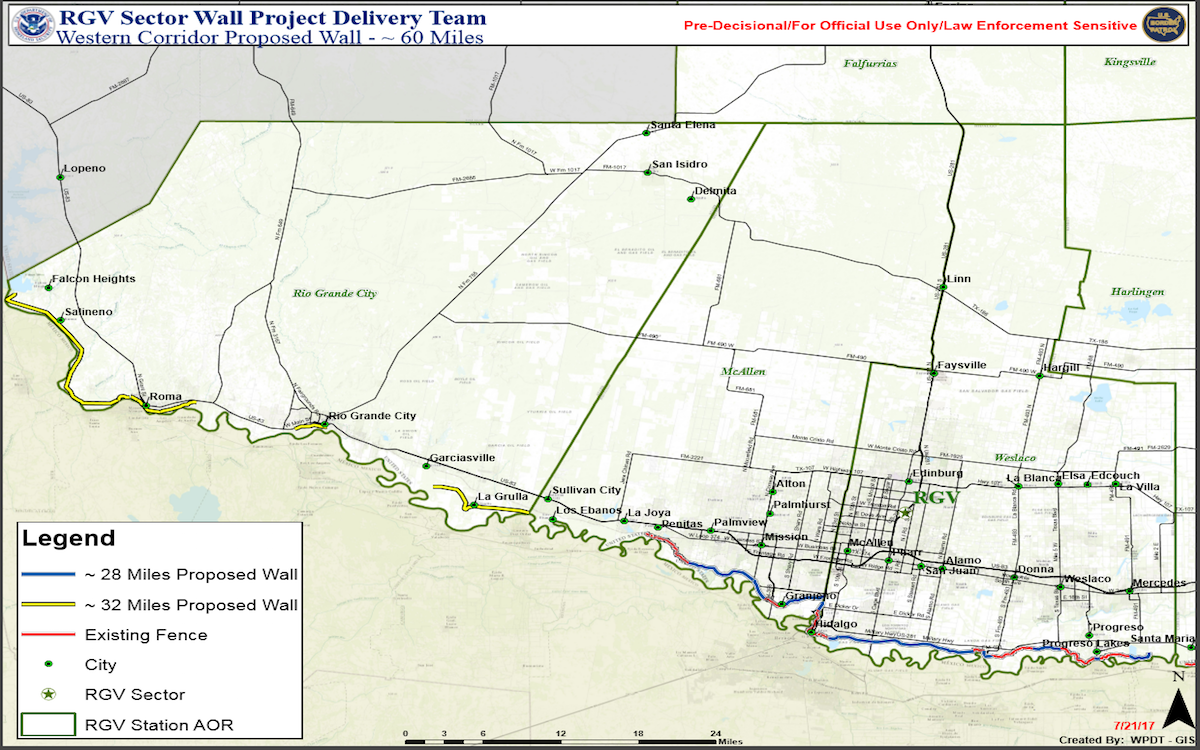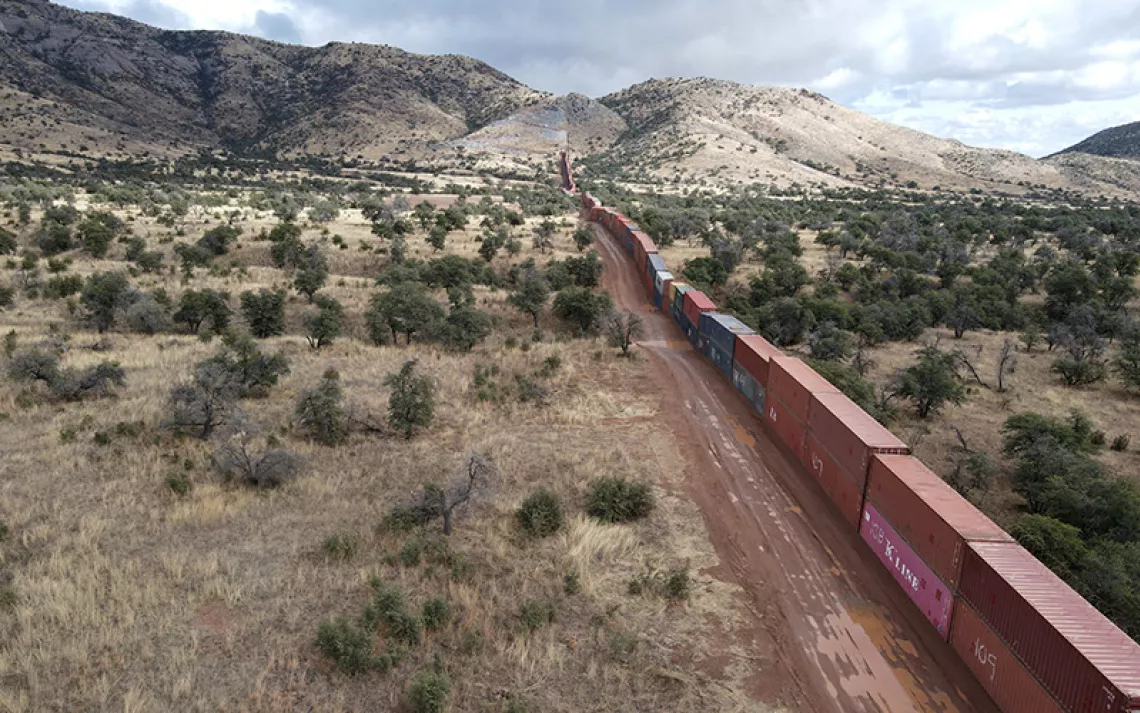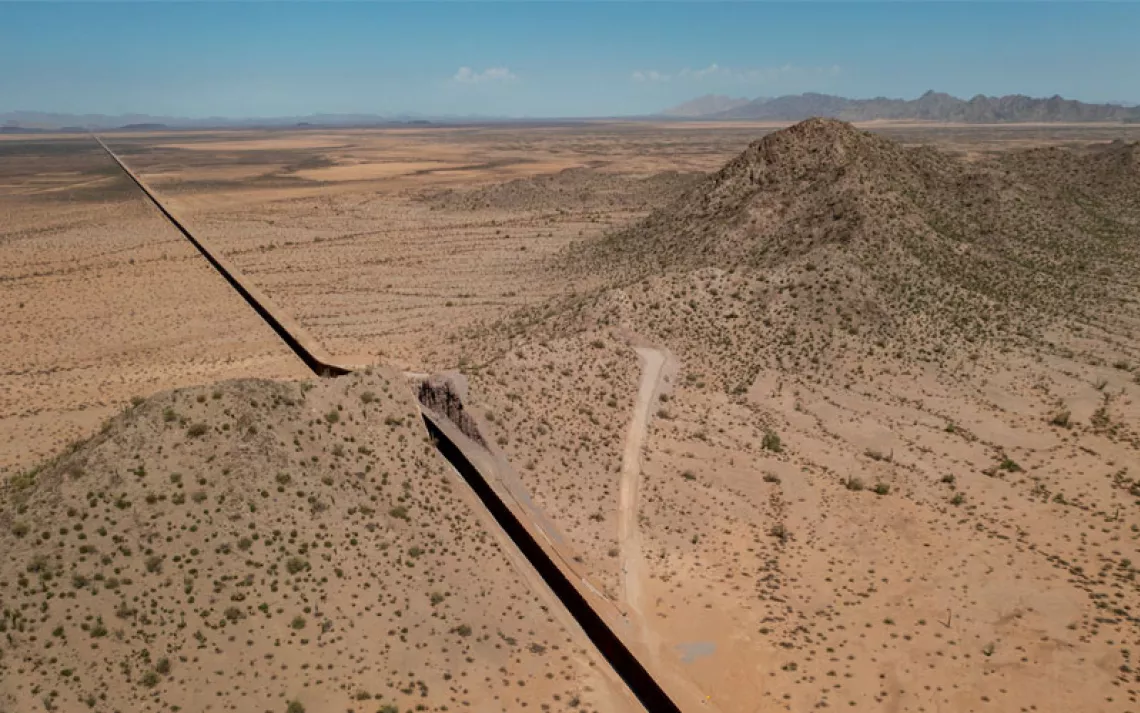Activists Vow Fight as Congress Funds Portions of Border Wall
New wall will slice natural areas in half

Photo by Daniel Blue Tyx
Last week Congress voted to appropriate some monies to build new fortifications along the United States–Mexico border, but border activists in the Rio Grande Valley say the fight against President Donald Trump’s border wall is far from over.
The nearly $1.6 billion in border wall funding included in the omnibus spending bill that Trump signed Friday provides for the construction of some 33 miles of new walls, all in Texas’s ecologically important Rio Grande Valley. Those walls will tear through communities, farms and ranchland, historic sites, and thousands of acres of protected wildlife habitat, while creating flooding risks on both sides of the border. But far from admitting defeat, border activists have already begun mapping out next steps to pressure Congress to slow down or even halt the wall’s construction.
Some media coverage portrayed the spending bill as a win for border wall opponents since it didn’t fund a wall for the entire border, and because it singled out the iconic Santa Ana National Wildlife Refuge for protection. But Congress never took seriously Trump’s fantasy of a 2,000-mile wall—which was about as realistic as Trump’s notion that Mexico would pay for the thing. And while the Santa Ana provision did represent a concession to environmental and immigrant rights activists, it obscures the true impact of the wall for both wildlife and people. The bill also didn’t include any protections for Dreamers, which congressional Democrats had previously deemed a precondition for any wall funding.
“Putting a wall through Santa Ana was made politically toxic to the point that they [congressional Republicans] made an explicit carve-out for it,” said Scott Nicol, co-chair of the Sierra Club’s Borderlands Team. “It shows the power of activism, but it’s not a victory yet. What it really shows is that we should redouble our efforts. We need to fight a lot harder if we want to save these other places.”
The spending bill specifically outlines 25 miles of new construction in the Rio Grande Valley’s Hidalgo County. The new walls there would join 22 miles of existing wall to create a 50-mile-long, continuous barrier—save only a three-mile gap, where the Santa Ana refuge is located—atop existing flood-control levees. The bill also funds approximately eight miles of additional walls, most likely in neighboring Starr County, where there are no such levees. That construction would occur in the Rio Grande floodplain. “In the event of a flood, [the wall] becomes an impenetrable barrier and bounces water deeper into Mexico, creating the potential for an environmental and human catastrophe,” Nicol said. The wall also presents flooding risks for border communities on the U.S. side, where water rushing down ordinarily dry arroyos can be trapped during heavy rain. “You’re going to have areas that formerly have not had a flooding problem that will have a flooding problem now,” Nicol added.
Among the places most affected will be the Lower Rio Grande Valley National Wildlife Refuge, a string of tracts that form a narrow band of green space along the river in both Hidalgo and Starr Counties. Although lesser known than the Santa Ana reserve, the refuge is arguably even more important for wildlife. Federal officials have spent 40 years and millions of dollars developing the wildlife corridor, which allows for the migration of species including the endangered ocelot in a region in which 97 percent of native habitat has been cleared. According to Tiffany Kersten, board member for the nonprofit Friends of the Wildlife Corridor, the new walls will bisect more than 5,900 acres of protected wildlands, with dire consequences for the estimated 50 to 70 ocelots remaining in the region. “What is north of the wall cannot migrate south of the wall, and vice versa,” Kersten said. “If the ocelots that are here in South Texas are not allowed to interbreed with the genetics of the population from Mexico, eventually they’ll become too inbred and become extinct in the U.S.”
At the National Butterfly Center, where butterfly enthusiasts from across the country come to see 150 endemic species like the red-bordered pixie, there is also concern about the new border wall sections bisecting protected habitat. Roughly 70 percent of the center’s property lies on the south side of the levee where the wall will be built. On Saturday, Marianna Treviño Wright, the center’s director, was teaching volunteers how to spread butterfly food—a mixture of rotten bananas, dark beer, and brown sugar—in the botanical gardens situated on the levee’s north side. “It’s going to go right there,” she said, pointing behind her. “A big, ugly, monolithic physical barrier between us and the view and the wildlife. Who knows what it will do to the wildlife crossing back and forth?” Just down the road from the butterfly center, birders and cyclists were enjoying a spring day at Bentsen–Rio Grande Valley State Park, which would be almost entirely on the south side of the wall. While rangers there are not talking to the press, some National Butterfly Center employees say they have heard rumors that the state park—another popular destination for the Rio Grande Valley’s $463 million annual eco-tourism industry—planned to close when the wall is constructed.
On Sunday at Our Lady of Guadalupe Church in Mission, parishioners joined with border wall opponents for the annual Palm Sunday procession to La Lomita, the century-old adobe structure for which the city is named. This was the 25th year of the procession, which attracts thousands of visitors who stay at the mission grounds for a barbecue cookout. But it might be the last, since the mission is also slated to be walled off. “[La Lomita] was the first settlement here, down on the river. That’s the roots of our faith. It’s our congregation’s Jerusalem,” Father Roy Snipes said, driving a golf cart adorned with fresh-cut palm fronds. Some parishioners carried hand-stenciled signs with messages like “Protect Immigrant Families” and “Save Our River.”
“They’re not telling us anything,” Father Snipes added, referring to federal government agencies like the Border Patrol. “I guess when the construction starts, that’s when we’ll really know.”
Now that a border wall expansion has been funded, the coalition of grassroots organizations that formed in response to Trump’s proposal is gearing up for the next phase in the struggle—slowing or even halting its construction. “This is a difficult moment, but we also know the approval of funds isn’t the end of it,” said John-Michael Torres, spokesperson for La Unión del Pueblo Entero (LUPE), an immigrant-rights organization. For most of the past year, LUPE has partnered with the Lower Rio Grande Valley Sierra Club Chapter, the grassroots No Border Wall Coalition, and other groups to oppose the wall. “Cities can pass resolutions saying that they will not do business with border wall profiteers, and landowners can take the government to court over eminent domain suits to slow this process down,” Torres said. “There are more ways that we can resist.”
Ultimately, such efforts will only be successful if voters nationwide demand change at the ballot box in November and hold their representatives accountable once the election is over. Congressional leadership in both parties supported the spending bill, albeit for different reasons. In the Senate, the bill passed with more Democratic votes than Republican ones. “I think we’ve been very good at putting pressure on our local border politicians, but that’s not enough,” said Nicol of the Sierra Club’s Borderlands Team. “We have to make it so that Chuck Schumer in New York feels the pressure, and Dick Durbin in Illinois feels the pressure, and every key decision-maker in Congress feels like we need to not only not fund any walls in the future, but also go back and pull the funding for these walls and reinstate environmental laws.”
“If we had members of Congress say, ‘No more walls can go up without complying with all our nation’s environmental laws,’ that would be huge,” Nicol added. “We need to make it so that Congress feels compelled to do that. The ‘blue wave’ that we keep hearing about doesn’t mean a whole lot if it doesn’t bring with it a change in policy.”
 The Magazine of The Sierra Club
The Magazine of The Sierra Club




